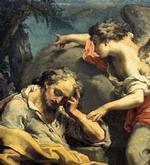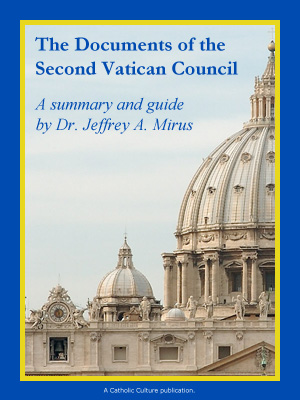A Fertile Encounter of Faith and Culture
This year commemorates the 450th anniversary of St Francis Xavier's arrival in Japan. He landed on Kagoshima precisely on 15 August 1549, the great feast of St Mary, as he later reported in his letter to St Ignatius Loyola.
For sometime Sophia University in Tokyo, whose roots go back to St Francis himself and his companions in the Society of Jesus, has been working to make this 450th anniversary a most meaningful event for the future of the Catholic Church in Japan, namely, to learn something from the study of St Francis Xavier which can enlighten our work of evangelization in the 21st century.
Our discussion led to some basic concepts and significant problems. I would like to explain those important points so that you can understand our basic attitude towards the 450th anniversary of St Francis Xavier's arrival in Japan.
First of all, we would like to focus on St Francis Xavier not as an individual, as merely the first missionary to Asia, but the St Francis Xavier who represented the Europe of the 16th century: not only as a religious person, but also his cultural and social background. From this standpoint, St Francis Xavier's coming to Asia was the beginning of a new cultural exchange between Europe and Asia. It must be strongly emphasized that Xavier came to an Asian continent which already had a long and diversified culture of its own.
Even before arriving in Japan, Xavier traveled as a missionary through the world of Hinduism, Islam and China. It was a great mutual encounter of several great cultures of the Asian world.
Secondly, in this context Xavier himself and his companions began to realize the need for proper preparation on the missionary's part and concrete ways to deal with the high civilizations and cultures which were already flourishing in Asian countries. Therefore, even from the religious point of view, it was not a system in which one side, namely Europe, was the giver and the other side, Asia, was the mere receiver. Actually, what happened was that the Asian world, according to its diversity, reacted differently to European elements; things such as science and technology were generally well accepted but other things such as religion and cultural ideas were simply rejected or transformed by already existing ones.
Thirdly, even now among the Japanese scholars specializing in European studies, there is a strange tendency to separate religion, namely Christianity, from general European culture. The missionary activities of St Francis Xavier and his companions had a great influence on Japan, even giving rise to a specific cultural period, the so-called Southern Barbarian Culture, or Namban Bunka. It was very significant in the history of Japanese art. It is certain that Christians as well as non-Christians feel a kind of fascination for the period when Xavier and Christianity had a unique role in Japan. Without religion, what could have remained?
Religion, not only Christianity but all the important religions of the world, should be considered as the deeply inspiring element of every great culture.
Fourthly, these three important concepts, we have discovered, can all be concretely studied in the arts produced in that unique era called the "Christian century". With collaboration of several Japanese art museums, we have succeeded in holding several exhibitions. For instance, one art museum in downtown Tokyo is now holding a special exhibition entitled "St Francis Xavier - His Life and Times". Although Christianity is a minority religion in this country, these academic symposia and exhibitions about St Francis Xavier have a large audience. Almost all Japanese know his name and love Xavier and his times very much. It is surprising that these exhibitions about a religious person draw such great public attention in a non-Christian country like Japan. The Christian century ended in this country around the 1630s.
However, 16th-century Christianity undoubtedly became a part of Japanese history. Under the severe persecutions which lasted 300 years, the Japanese rejected Christianity as a religion, but they accepted Western culture or Namban Bunka.
Concretely, through analytical study of this peculiar cultural product, Namban Bunka, we can approach the period called the "Christian century", when European culture encountered Japanese traditional culture for the first time in the history of Japanese art.
It was a unique time when the great currents of two cultures, including Christianity, mingled, identified with and contrasted. From Japan's point of view, it turned out to be a period of great transformation.
Four hundred and fifty years have passed since the arrival of St Francis Xavier, and now we should start a new study on the kind of influence it has had on Japanese culture and religion.
Looking at it from this perspective and focusing our study on not only the historical figure of St Francis Xavier, but also on 16th-century European culture's encounter with traditional Japanese culture, we can all be enlightened on the problems we are facing now in this new century, that is, the acceptance of co-existence with various kinds of people, religion and culture. Through the international symposium with various kinds of people, religion and culture.
Through the international symposium organized by Sophia University for this coming December, we are going to consider once again, with this new insight, what was the European culture represented by St Francis Xavier.
What did Asian people see in the person of St Francis Xavier? This question opens a new insight into Asian culture and people as it encountered a new culture of great influence. Thanks to the extant arts, we can now see some concrete answers to this question in Indian-Hindu art, Islamic art and Japan's Namban art.
From my own point of view, St Francis Xavier has remained just a saint, a great saint of course, but I did not have a wider and deeper understanding of him as a representative of his time and culture. Through the insights and efforts of many scholars, artists and historians, a new image of St Francis Xavier and a new study has been opened to a much wider public in our country.
I sincerely hope that this event commemorating the 450th anniversary of St Francis Xavier may guide us, not only the Catholic Church in Japan, but also the Japanese people who love Xavier, to a new understanding of our world in the coming century.
© L'Osservatore Romano, Editorial and Management Offices, Via del Pellegrino, 00120, Vatican City, Europe, Telephone 39/6/698.99.390.
This item 1260 digitally provided courtesy of CatholicCulture.org






